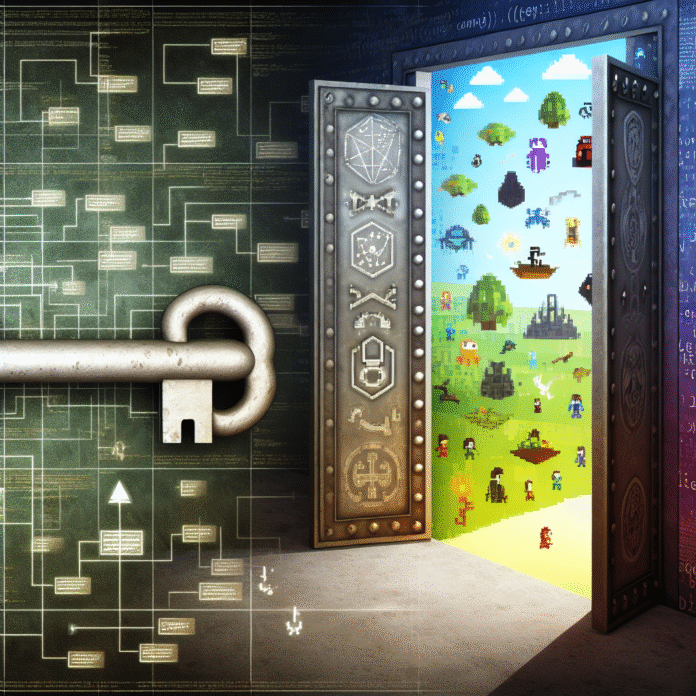Unlocking Creativity: How Indie Developers Are Shaping the Future of Gaming
Picture this: you’re settled in on a lazy Sunday afternoon, ready to dive into a new game when suddenly, you’re hit with a wave of nostalgia. All you want is a unique adventure that evokes the same thrill you felt playing your favorite childhood titles. Unfortunately, you’re met with the same glossy graphics and predictable storylines. It’s moments like these that make us realize how desperately we crave innovation in gaming. Enter the indie developers, the unsung heroes who are rewriting the rules of creativity and breathing new life into the industry.
The Indie Development Revolution
Indie developers are the small teams (or sometimes even solo creators) who refuse to adhere to the conventional norms dictated by larger gaming studios. With lower budgets but equal passion, these developers are delivering groundbreaking experiences that challenge the status quo. They manipulate stories, art styles, and gameplay mechanics in ways that corporate giants often overlook.
A standout example is “Celeste,” a platformer that tackles mental health issues while offering challenging gameplay. Its pixel art style coupled with a touching story showcases how indie developers can evoke emotion and tackle sensitive subjects in a manner that resonates deeply with players.
Breaking Free from Constraints
Imagine having complete control over your project without corporate oversight. Indie developers relish this freedom, allowing them to take risks that large companies might shy away from. This environment fosters experimentation and invites fresh ideas.
- New Narratives: Indie games often explore underrepresented themes and narratives. Titles like “Night in the Woods” delve into topics like mental health and interpersonal relationships, offering perspectives often ignored in mainstream gaming.
- Innovative Mechanics: Games such as “Braid” have challenged traditional game mechanics, introducing time-manipulation puzzles that forever altered how players approach problem-solving in games.
Community Impact and Player Engagement
One of the driving forces behind indie gaming is a sense of community. Developers actively engage with their player base, often seeking feedback during development. This collaboration can be seen with “Undertale,” where creator Toby Fox took fan suggestions to improve and evolve the gaming experience. It’s about more than just creating a game; it’s about building a community around shared passions.
Indie games often cultivate this sense of belonging. Platforms like Itch.io allow developers to share their work and receive immediate feedback. Players discover hidden gems that often lead to memorable and groundbreaking experiences. With so many voices in the indie space, every gamer can find something that speaks to them.
Funding the Future
Securing funding has historically been one of the biggest hurdles for indie developers. However, platforms like Kickstarter and Patreon have transformed the landscape. Gamers can directly support the developers behind their favorite projects, ensuring that creative visions aren’t lost to corporate red tape.
Take “Oxygen Not Included,” a survival simulation game made possible through Kickstarter. The developers shared updates and used backer feedback to continually evolve the game post-launch, creating an evolving ecosystem that made players feel a part of the journey.
The Technological Edge
The rise of user-friendly game engines, such as Unity and Unreal Engine, has also propelled indie development. These platforms offer powerful tools that allow even novice developers to create professional-quality games without needing extensive coding knowledge. Accessibility democratizes game development, enabling more voices to be heard.
The indie phenomenon has also found its foothold on mobile platforms. Independent titles like “Alto’s Adventure” and “Gris” exemplify how simple mechanics combined with gorgeous visuals can result in extraordinary gaming experiences. Mobile gamers are no longer limited to repetitive freemium games; instead, they can discover unique artistic expressions at their fingertips.
Why Indie Games Matter
At the heart of it all, indie games remind us of the joy of discovery. They break the monotony and ignite our imaginations, offering fresh perspectives through gameplay that diverges from the mainstream. As gamers, it’s essential to support this aspect of the industry. Buying indie games not only helps grow the community but also sends a message that creativity and originality are valued.
Moreover, indie titles often push larger studios to reevaluate their approaches. When players respond enthusiastically to the innovative mechanics and storytelling found in indie games, it challenges big companies to adopt similar strategies — ultimately benefiting the entire gaming landscape.
So, the next time you load your favorite platform or digital storefront, take a moment to explore the indie offerings. You might just stumble upon a charming narrative, a novel mechanic, or a captivating visual experience that reignites your passion for gaming. In a world where trends often dictate outcomes, it’s the small, indie-driven titles that are lighting the path ahead.
Embracing the Future of Gaming
The future of gaming is not confined to blockbuster titles. Indie developers are creating diverse worlds, pushing boundaries, and offering experiences that are both entertaining and thought-provoking. The industry is evolving, and indie developers are at the forefront.
As players, it’s vital for us to champion these creators and their spectacular visions. Let’s embrace innovation, support diversity, and continue our adventures with the indie gems that make our gaming lives a little brighter and more imaginative.
In this age of creativity and exploration, the indie scene is a reminder that gaming is an art form — always worth unlocking, always worth celebrating.

